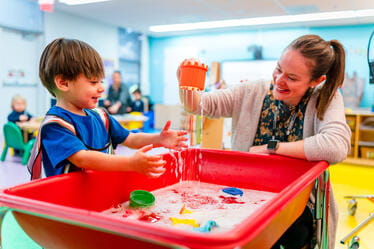We use cookies to improve your online experiences. To learn more and choose your cookies options, please refer to our cookie policy.
/bis_washington_2025_030-(1).jpg?h=3648&iar=0&w=5472&rev=3d3ed38f90e148e994e54de4e7033411&hash=15B8515FBDE830200CACE05BB2ADD85E)

The transition to secondary school at the British International School of Washington doesn’t just mark a new academic chapter—it coincides with one of the most significant periods of brain development in a young person’s life. When parents better understand these changes, they can offer more effective support, guidance, and reassurance throughout the middle and high school years.
A Brain Still Under Construction
During adolescence, the brain undergoes a major "remodeling" phase that rivals the rapid growth seen during early childhood. As Dr. Frances Jensen, neurologist and author of The Teenage Brain, explains:
“Adolescents are not just young adults—they are works in progress. Their brains are still developing, especially in areas related to decision-making, impulse control, and planning.”
The limbic system—the brain’s emotional center—develops earlier and becomes highly active, which is why teenagers may experience intense emotions, mood swings, or impulsive reactions. Meanwhile, the prefrontal cortex, which governs judgment, organization, long-term planning, and emotional regulation, continues developing well into a person’s mid-twenties.
This imbalance often leads to the classic “push and pull” parents observe: a teenager who is capable of sophisticated thinking one moment, and reactive or impulsive the next.
Why Empathy and Structure Matter
- Understanding the science behind your child’s behavior allows you to approach challenges with empathy and patience, rather than frustration or confusion. Here are a few ways you can support your child through this critical developmental stage.
- Normalize mistakes and setbacks. Adolescents are learning by doing. Mistakes are not signs of failure, but part of the developmental process.
- Maintain consistent routines and boundaries. Predictable schedules and clear expectations help reduce stress and build self-regulation skills.
- Stay emotionally available. Even as they seek independence, adolescents still need parental reassurance and support. Regular conversations about school, friendships, emotions, and challenges can make a big difference.
- Help manage digital use. Adolescents are still learning to self-regulate online behavior. Establish healthy boundaries for screen time, online communication, and social media use.
- Prioritize sleep and nutrition. A well-rested brain is better equipped for learning, emotional regulation, and stress management. Teenagers generally need 8–10 hours of sleep each night.
- Model calm, respectful communication. Teenagers often mirror the emotional tone of the adults around them. By staying calm during moments of frustration, you help model effective coping strategies.
At BISW, we intentionally design our curriculum, wellbeing programs, and learning environments with adolescent brain development in mind. Our approach combines academic rigor with social-emotional learning, personal organization, and wellbeing education. We understand that student success during these years requires not just strong academics, but also a safe, supportive environment where students can build confidence, resilience, and lifelong learning skills.
Secondary school is not just about preparing for exams—it’s about helping young people navigate one of the most dynamic and transformative stages of their lives. When parents and schools work together with a shared understanding of adolescent development, students are better equipped to thrive both academically and personally.